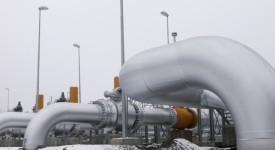Despite improvements in Europe’s economic outlook, the bloc’s economy still faces a number of challenges ranging from low investment, youth unemployment and the social fracture. The positive momentum is a result of the highest economic growth Europe has had since the eruption of the 2007-2008 financial crisis. The EU economists have therefore significantly revised their forecast upwards for 2017 and 2018, as more jobs were added. The unemployment rate in the EU is now at 7.3% and EU countries have also managed to bring their public accounts into balance with the average deficit now being around 1.1% of GDP.
Yet, the quality of the recovery is not ideal. As Marco Buti, Director General of Commission’s DG Economy and Finance, pointed out, “the recovery remains incomplete and several features of the economic expansion remain atypical”. Employed Europeans are still compensated with low salaries, the European economies are indebted and the phenomenon of the working poor is spreading. Mario Draghi, the President of the European Bank, has also warned against low wages and some say that the recovery was “more subdued” due to the “sluggish” growth in wages. Moreover, public investment is still low and represents a low percentage of the EU’s GDP despite the EU-wide and national efforts.
The biggest worry, however, is the future of Europe’s youth. Job insecurity is a new normal for many young Europeans, characterized by partial contracts, low wages or – often times – simply no opportunities. As the Commission President Jean-Claude Juncker put it in the white paper on the future of Europe – “there is a real risk that the generation of today’s young adults ends up less well-off than their parents”.







